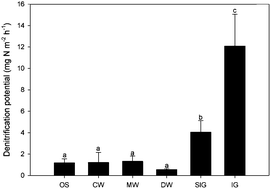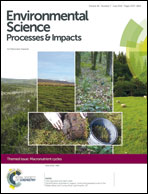Denitrification potential of organic, forest and grassland soils in the Ribble-Wyre and Conwy River catchments, UK
Abstract
Soil denitrification activity can be highly variable due to the effects of varied land use management practices within catchments on the biogeochemical regulators of denitrification. To test this assumption in the context of mixed-use rural catchments, it was hypothesised that the relative magnitude of denitrification activity may be regulated, among others, by a gradient of soil nitrate (low to high) between organic (peat bog, heathland, and acid grassland), forest (coniferous and deciduous), and grassland (improved and semi-improved) rural land use types. The denitrification potential (DP) of organic, forest and grassland soils, in two UK catchments was measured in the laboratory. Land use type significantly (p < 0.05) influenced the DP, which ranged between 0.02 and 63.3 mg N m−2 h−1. The averaged DP of organic and forest soils (1.08 mg N m−2 h−1) was 3 and 10 times less than the DP of semi-improved (4.06 mg N m−2 h−1) and improved (12.09 mg N m−2 h−1) grassland soils, respectively; and among others, nitrate correlated positively (p < 0.05) with the DP. The results indicated that the difference in soil nitrate concentration between organic (naturally low in nitrate availability) and grassland soils (nitrate enriched due to land management) partially regulated the extent of DP. In the absence of N fertilisation, except for the atmospheric N deposition, the relatively low net nitrification potential (as a source of nitrate for denitrifiers) of organic and forest soils alone seem to have resulted in lower denitrifier's activity compared to grassland soils. Moreover, the interactions between soil organic carbon, pH, bulk density, water filled pore space, and texture, as these are influenced by the relative degree of land management, exerted additional controls on the DP. The results suggest that land management can have significant effects on denitrification, and thus needs to be considered when modelling and/or predicting the response of denitrification to land use change.

- This article is part of the themed collection: Macronutrient Cycles

 Please wait while we load your content...
Please wait while we load your content...